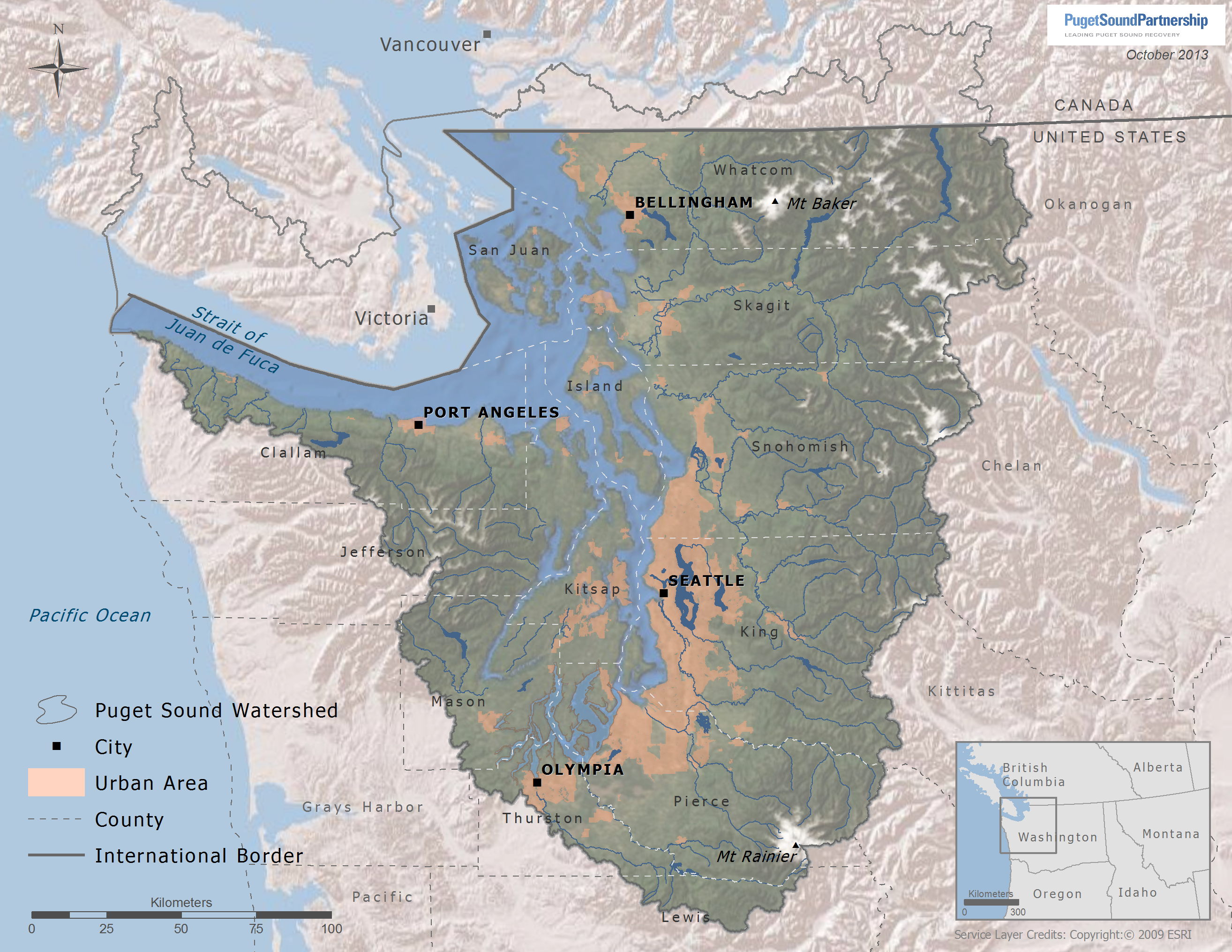My post on Water Quality in Puget Sound explains that,
Puget Sound is the 2nd largest estuary in the United States (Chesapeake Bay is the largest). The Puget Sound drainage basin is 13,700 square miles and includes 13 U.S. counties plus one in Canada. The basin has three physiographic areas including the Olympic Mountains, the Puget Lowlands, and the Cascade Range.
 |
| Map of Puget Sound watershed boundary, published by the Puget Sound Partnership. |
But, why is Puget Sound important and, why should you care about it? One of the biggest reasons is our salmon. We eat salmon, they are a cultural icon and treaty right for several Native American Tribes, and these fish play an important role in the food web which affect the orcas. Even if that isn't something you care about, having beautiful, clean water to swim and play in is another important reason. Stormwater impacts these uses and is the largest input of toxic pollution in Puget Sound. In essence, all of our drains in this region empty in Puget Sound and contribute to this overwhelming problem. See my post on what stormwater is for more details here.
Stormwater is the biggest source of toxic pollution to Puget Sound. Studies by the Washington Department of Ecology show that 75% of the toxic chemicals entering Puget Sound are carried by stormwater runoff flowing off hard, developed surfaces and into our waterways. This pollution impacts our environment, economy, and health. To protect our region’s salmon, orcas, and communities, we must stop stormwater pollution now.
Hard developed surfaces include the roof of your home, your driveway, and all the roads and parking lots you drive on to get to the grocery store. The University of Washington's Puget Sound Institute maintains the Encyclopedia of Puget Sound. It delves into the issues and concerns impacting the health of Puget Sound. This comprehensive guide shares articles, maps, and reports to help us learn more about Puget Sound's health and explains its importance both regionally and internationally. Their website states, "Our mission: Promote synthesis and improve access to the best available, most relevant scientific information in support of Salish Sea recovery."
The Puget Sound Partnership is the state-led effort to improve the health of Puget Sound. They receive Federal funding to coordinate and support important efforts in the Puget Sound Partnership Action Agenda. One particularly relevant strategy in the 2022-2026 Action Agenda is Stormwater Runoff and Legacy Contamination. Action items include behavior change and education to reduce nutrient loading (i.e. limit fertilizers and pick up your dog poop! I'm not sure why horse poop isn't treated the same...) and a focus on retrofitting (improving and enlarging) existing stormwater systems which were designed to older standards which are now not protective enough by today's standards.
I hope this gives you a glimpse into what Puget Sound is, why its health matters, and how you can impact it for better or worse.
